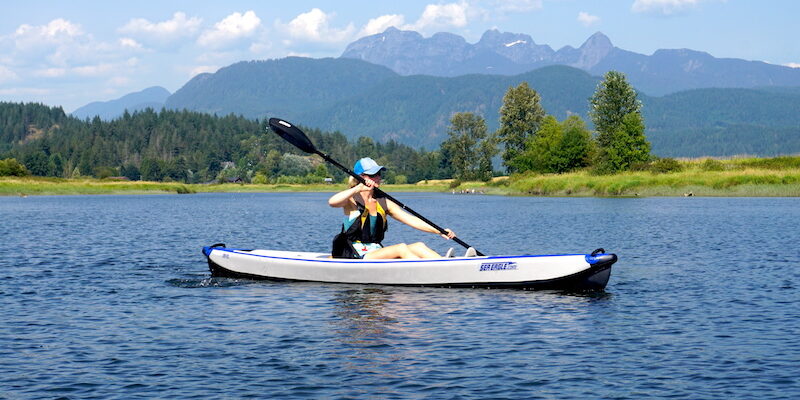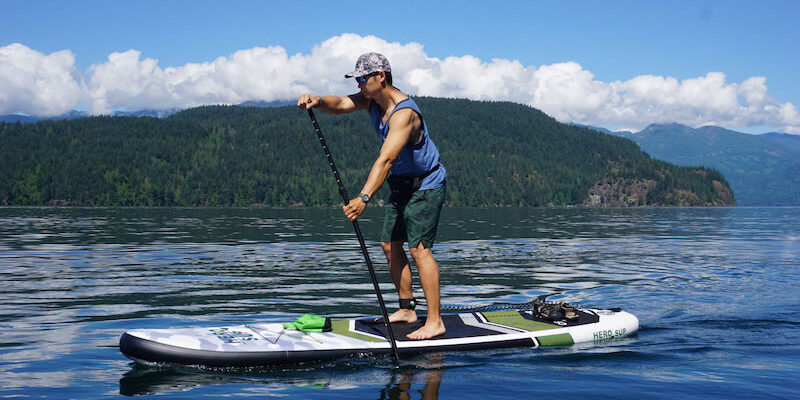Having good control of your kayak will come from coordination and balance as opposed to brute force.
Using the right paddling techniques will help to ensure that your ride is smooth, enjoyable and also fairly dry (unless you decide to brave the whitewater rapids).
Many people mistakenly believe that power when paddling a kayak comes from the arms.
The truth is that the strength actually comes from the torso (trunk rotation) first, leg pressure second and the arms third as merely a bridge between the power source and the paddle.
As a beginner kayaker, there are three main paddling techniques that are essential to learn before you begin your ride.
The forward paddle, the reverse paddle and of course turning the kayak.
All three of these are very easy to learn and will definitely help you to smoothly make the transition into a seasoned kayaker.
Read these notes and then get on the water, start practicing and have some fun!
Remember you will paddle faster, easier and further if you perfect your paddling form.
Forward Paddle
(front to back)
Above photo from REI.com.
This will be your most commonly used paddle stroke. Be sure that you are sitting up straight in the kayak, don’t slouch back.
Also make sure that your feet are right up against the foot rests in your kayak as this will help you to have a more powerful stroke.
Now relax your grip so as to avoid wear and tear on your hands (a good pair of kayak gloves will do wonders to stop painful scrapes and blisters).
You want to place the paddle in the water close to the kayak around where your feet are and make the stroke deep.
Pull backwards and you’ll be gliding through the water.
Reverse Paddle
(back to front)
Above photo from REI.com.
You will not use this paddle as much as the forward paddle but it is just as important to master.
For this technique you want to use the back of the paddle blade. Instead of inserting the paddle near your feet (as in the forward paddle), put the paddle in the water near your hips instead.
Now push the paddle toward the trunk of your kayak while turning your torso. If you want to have more power with this stroke reach further behind your hips when placing the paddle in the water.
A key point to remember here is to keep your elbows bent in order to avoid injuries and pull the blade out of the water when it is even with your knees.
Always keep checking over your shoulder behind the kayak to make sure that there is nothing in your way.
Sweep Stroke
(turning the kayak)
Above photo from REI.com.
You can imagine why it is extremely important to learn how to turn your kayak properly.
Failing to do this could cause some pretty unnecessary crashes. The most effective way to turn a kayak is to do a deep reverse stroke (back to front) on the side of the direction you want to turn.
Many people will do the opposite and do a forward paddle on the opposite side of the direction you want to turn but this is not nearly as effective.
After learning these three strokes you are ready to go out and enjoy the water.
Next Article: Beginners Guide To Kayaking


Leave a Reply Cancel reply